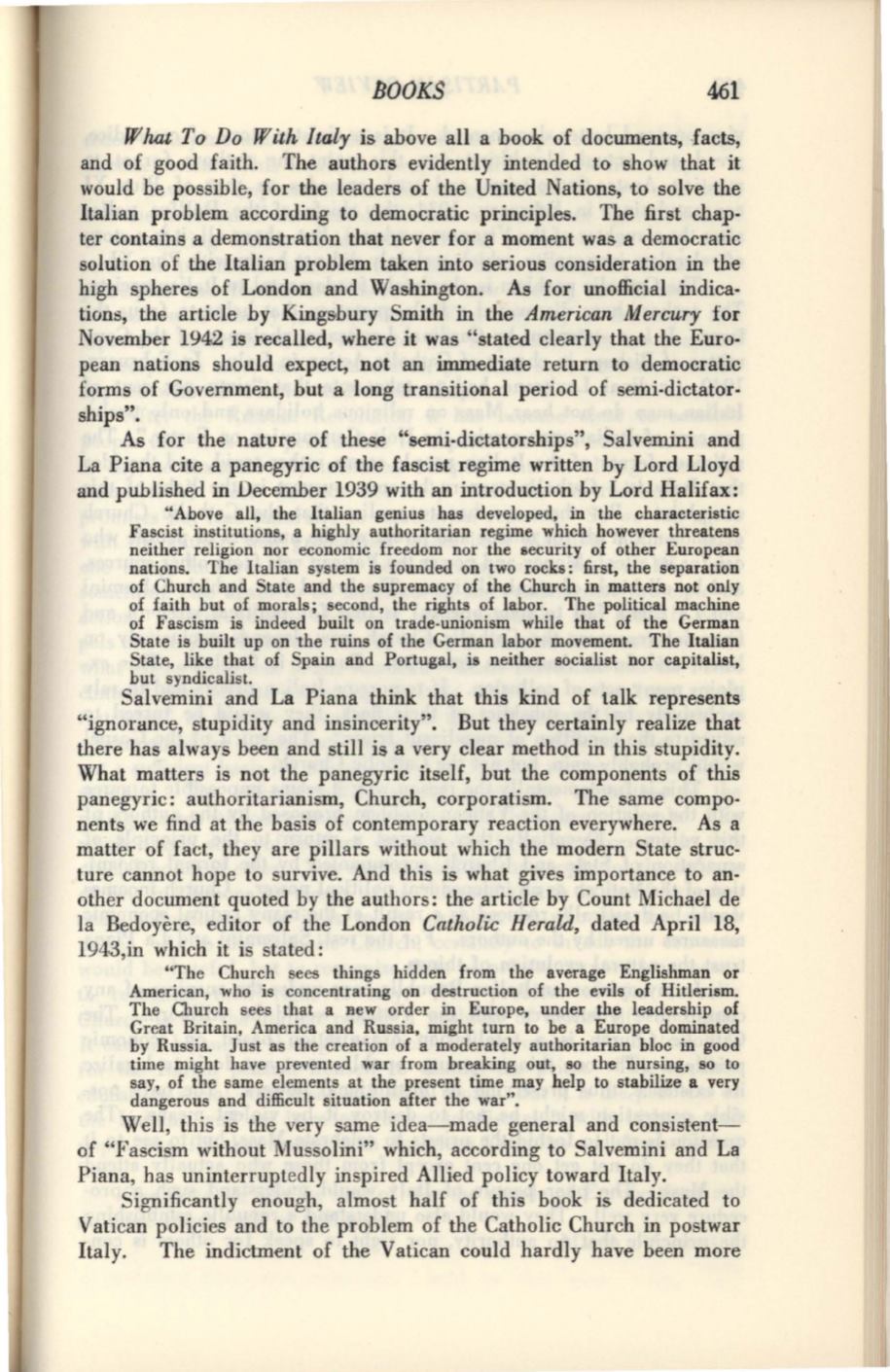
BOOKS
461
What To Do With Italy
is above all a book of documents, .facts,
and of good faith. The authors evidently intended to show that it
would be possible, for the leaders of the United Nations, to solve the
Italian problem according to democratic principles. The first chap–
ter contains a demonstration that never for a moment was a democratic
solution of the Italian problem taken into serious consideration in the
high spheres of London and Washington. As for unofficial indica–
tions, the article by Kingsbury Smith in the
American Mercury
for
November 1942 is recalled, where it was "stated clearly that the Euro–
pean nations should expect, not an immediate return to democratic
forms of Government, but a long transitional period of semi-dictator–
ships".
As for the nature of these "semi-dictatorships", Salvemini and
La Piana cite a panegyric of the fascist regime written by Lord Lloyd
and published in December 1939 with an introduction by Lord Halifax:
"Above all, the Italian genius has developed, in the characteristic
Fascist institutions, a highly authoritarian regime which however threatens
neither religion nor economic freedom nor the security of other European
nations. The Italian system is founded on two rocks: first, the separation
of Church and State and the supremacy of the Church in matters not only
of faith but of morals; second, the rights of labor. The political machine
of Fascism is indeed built on trade-unionism while that of the German
State is built up on the ruins of the German labor movement. The Italian
State, like that of Spain and Portugal, is neither socialist nor capitalist,
but syndicalist.
Salvemini and La Piana think that this kind of talk represents
"ignorance, stupidity and insincerity". But they certainly realize that
there has always been and still is a very clear method in this stupidity.
What matters is not the panegyric itself, but the components of this
panegyric: authoritarianism, Church, corporatism. The same compo–
nents we find at the basis of contemporary reaction everywhere. As a
matter of fact, they are pillars without which the modern State struc–
ture cannot hope to survive. And this is what gives importance to an–
other document quoted by the authors: the article by Count Michael de
la Bedoyere, editor of the London
Catholic Herald,
dated April 18,
1943,in which it is stated:
"The Church sees things hidden from the average Englishman or
American, who is concentrating on destruction of the evils of Hitlerism.
The Church sees that a Hew order in Europe, under the leadership of
Great Britain, America and Russia, might turn to be a Europe dominated
by Russia. Just as the creation of a moderately authoritarian bloc in good
time might have prevented war from breaking out, so the nursing, so to
say, of the same elements at the present time may help to stabilize a very
dangerous and difficult situation after the war".
Well, this is the very same idea-made general and consistent–
of "Fascism without Mussolini" which, according to Salvemini and La
Piana, has uninterruptedly inspired Allied policy toward Italy.
Significantly enough, almost half of this book is dedicated to
Vatican policies and to the problem of the Catholic Church in postwar
Italy.
The indictment of the Vatican could hardly have been more


